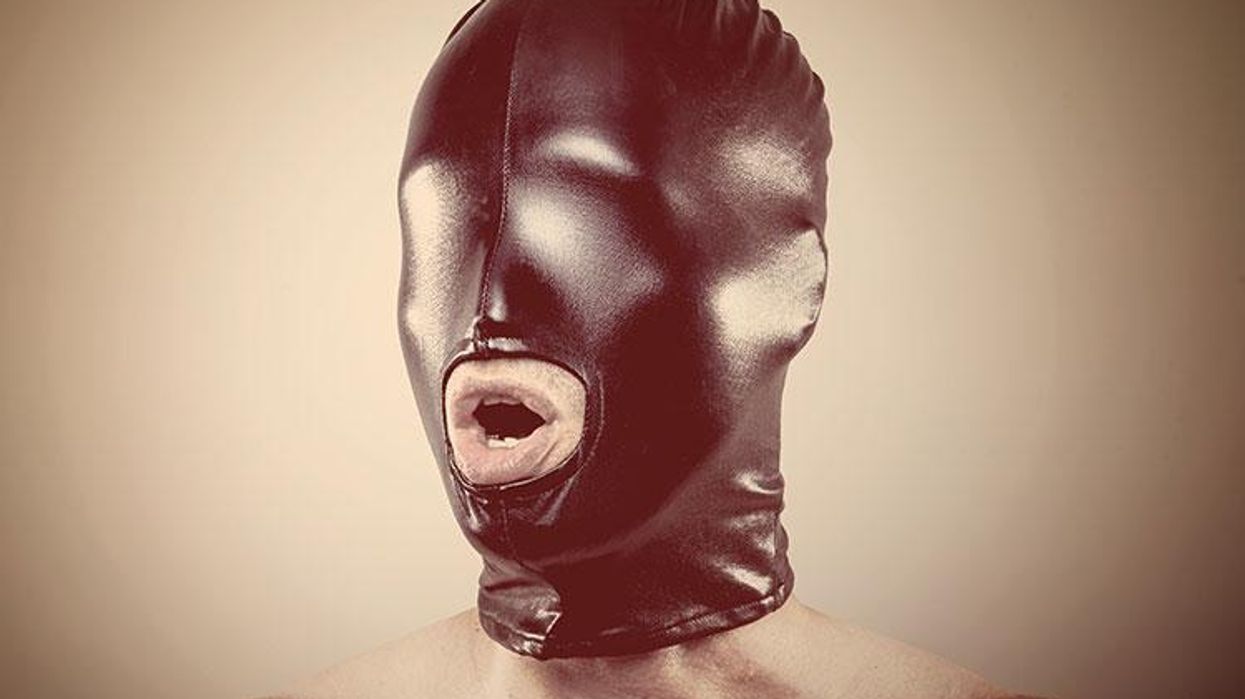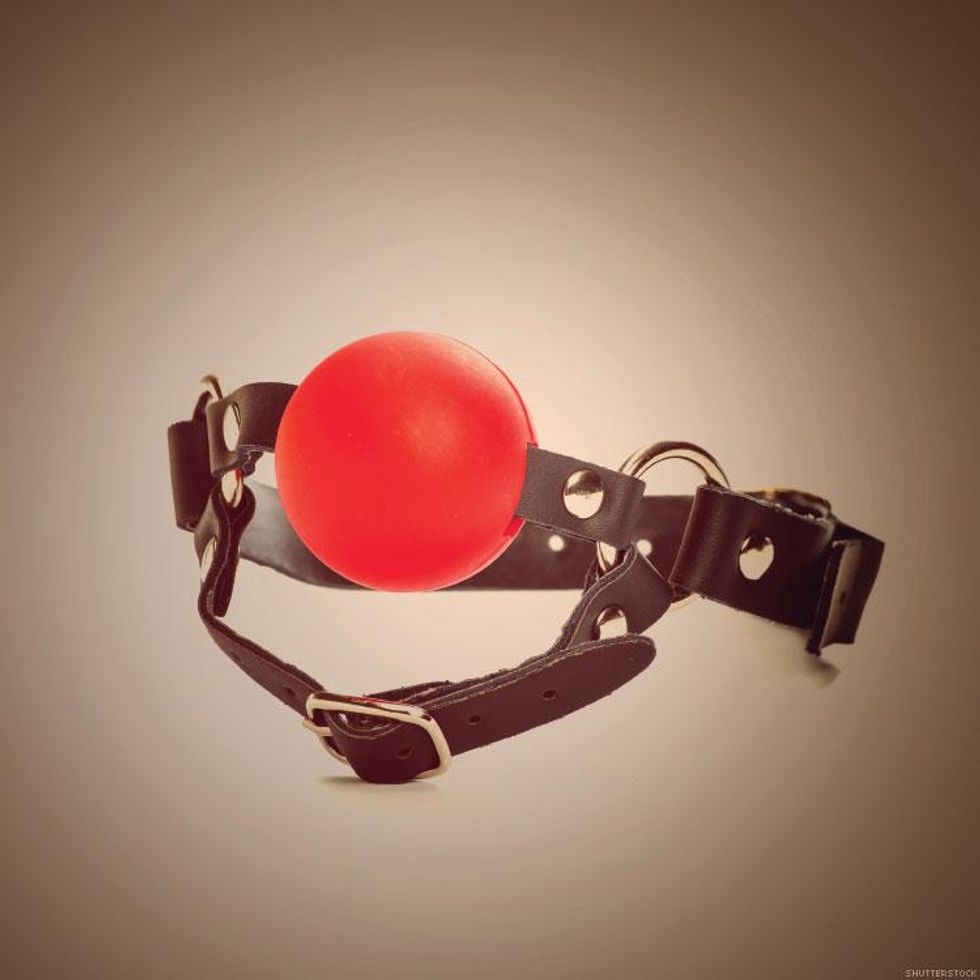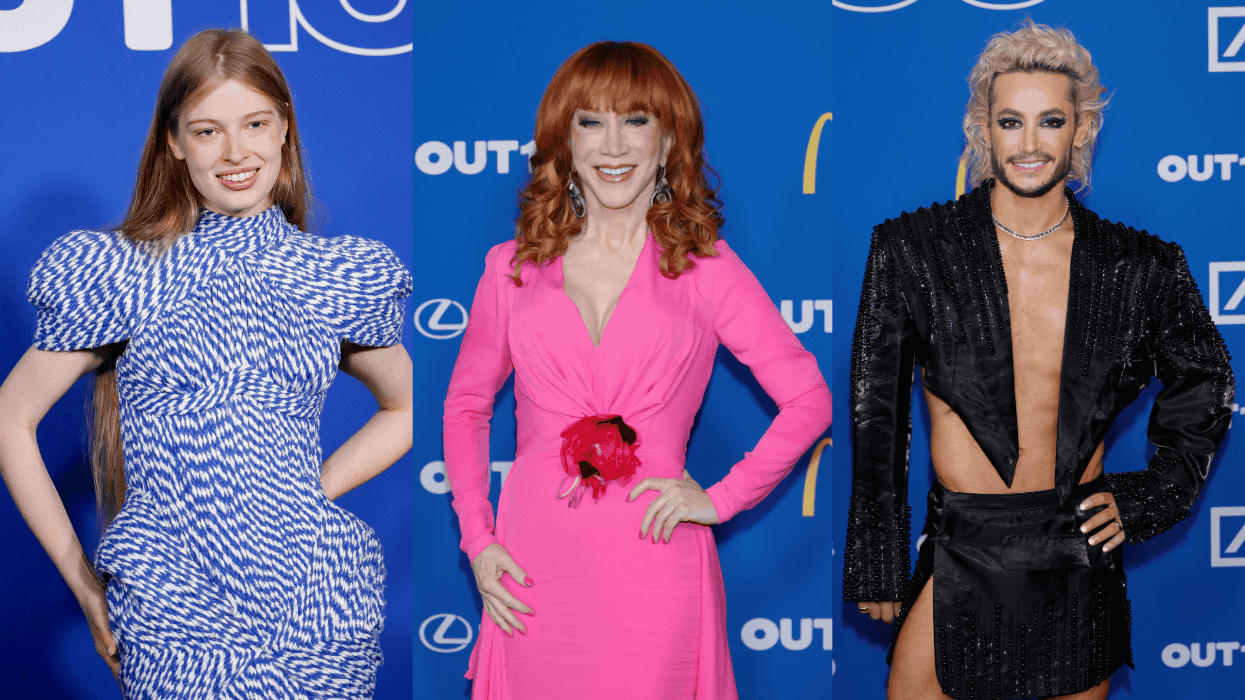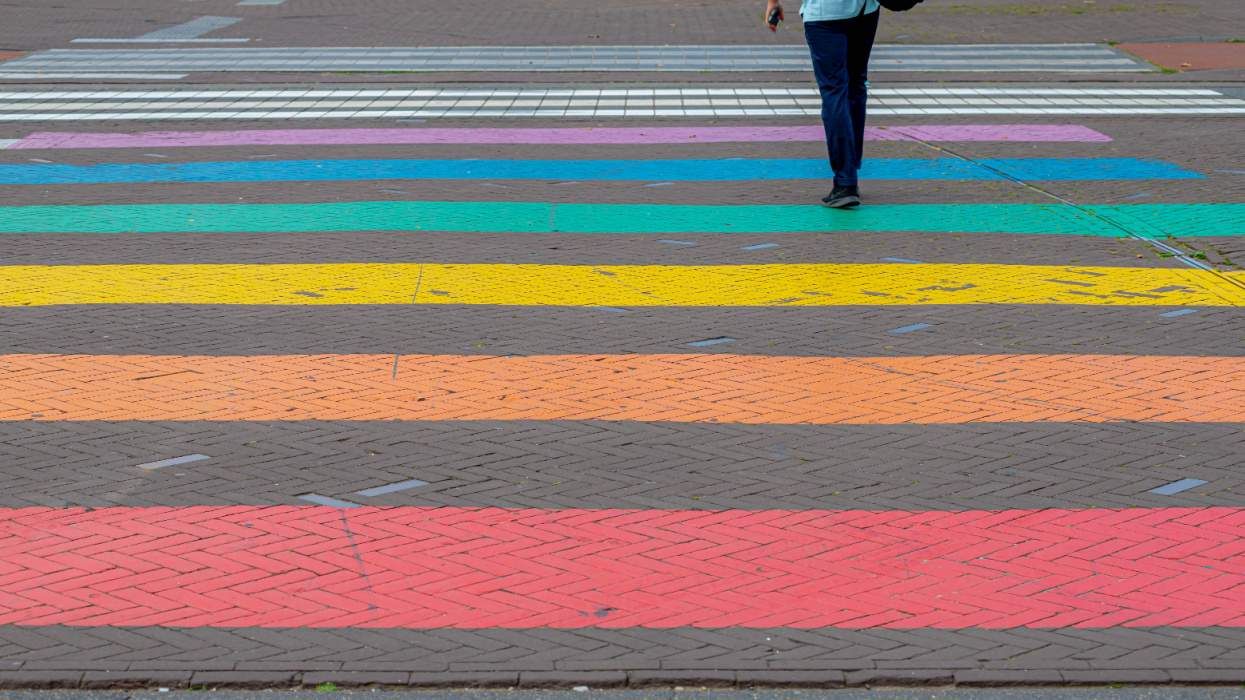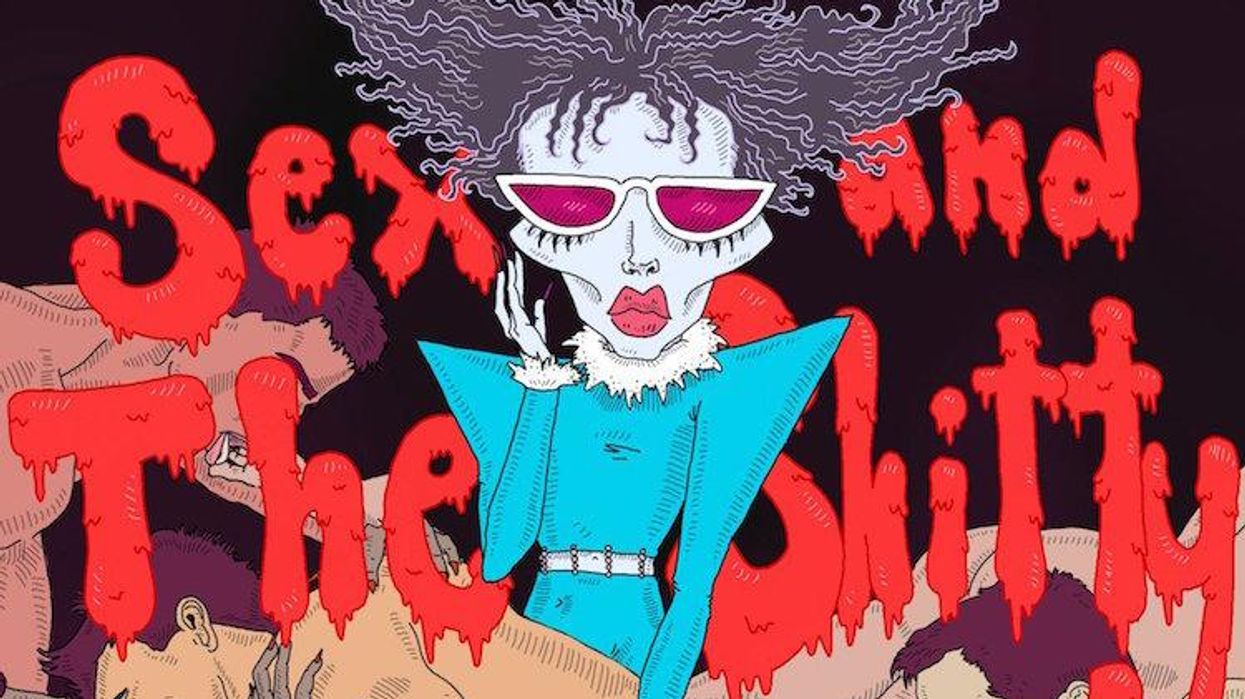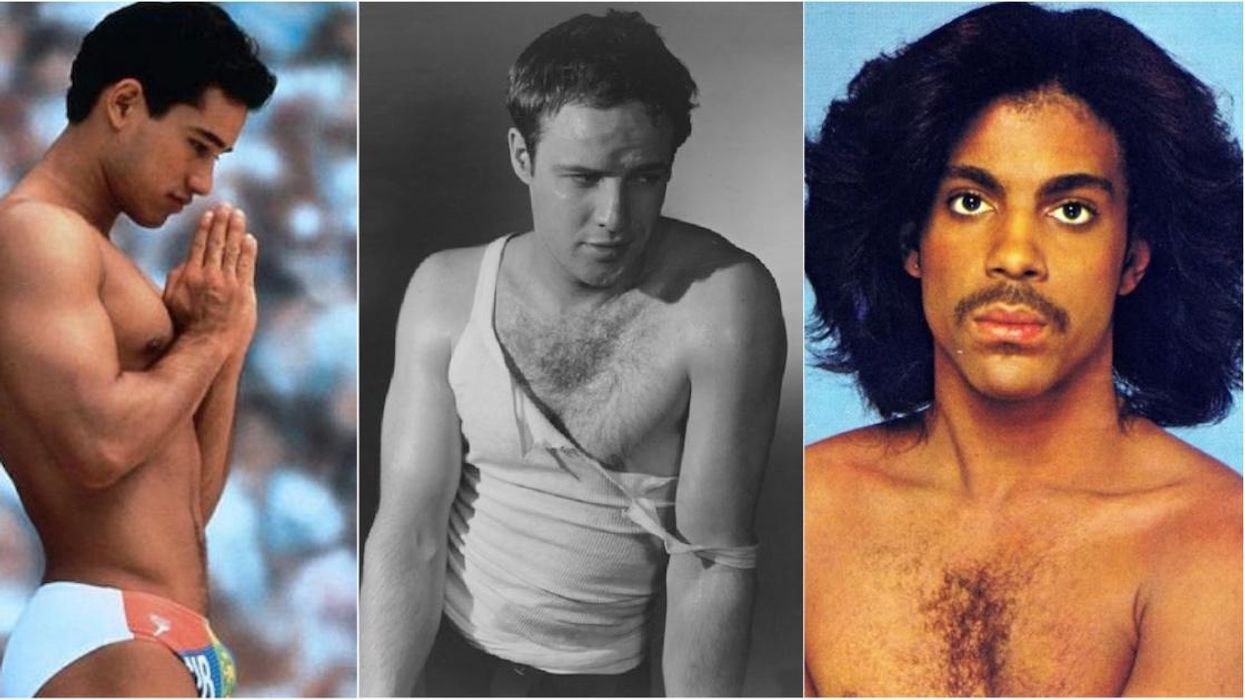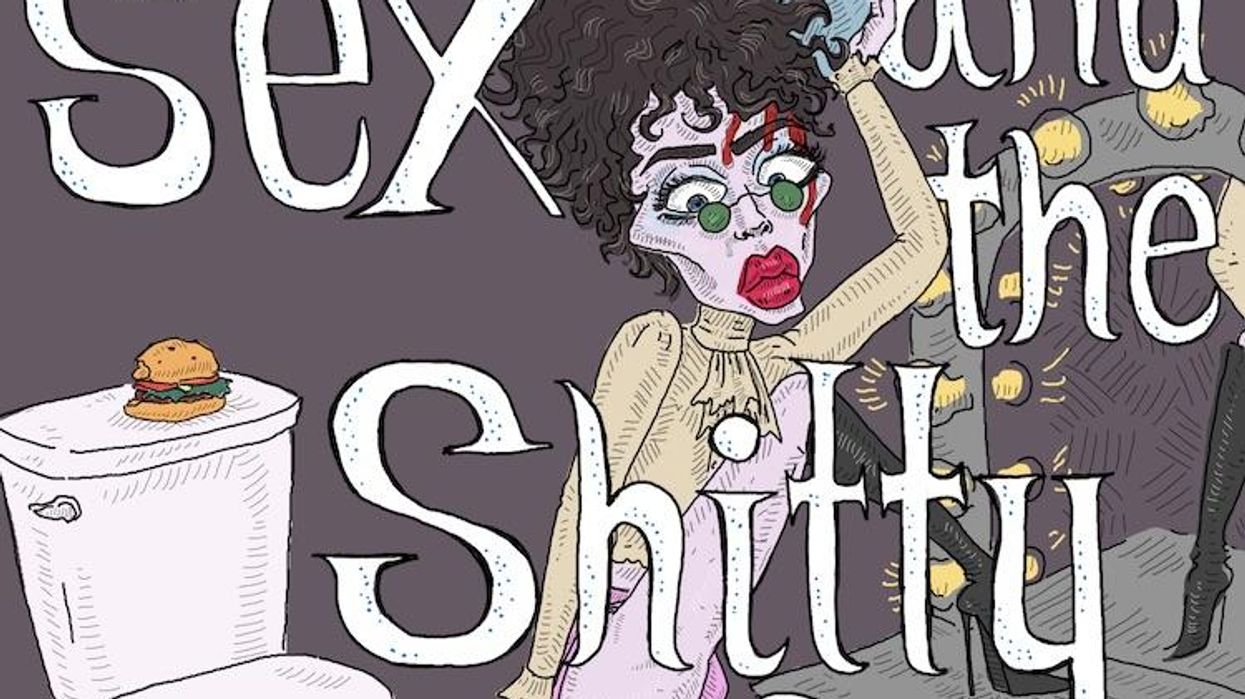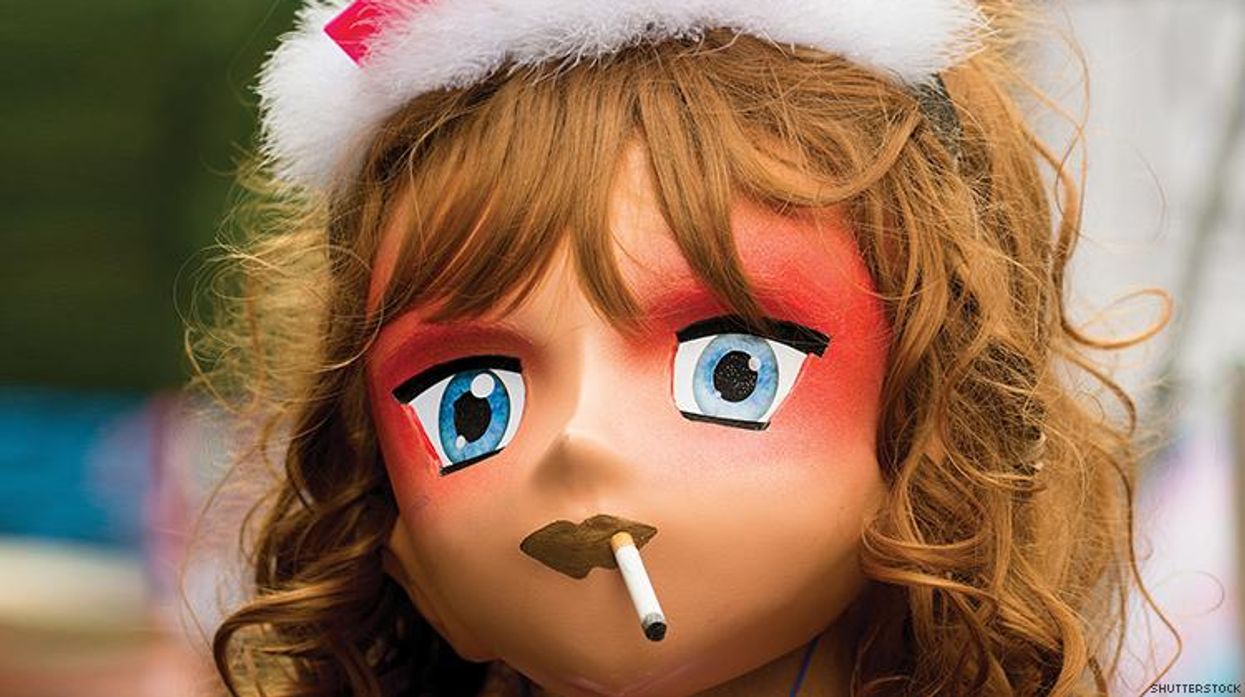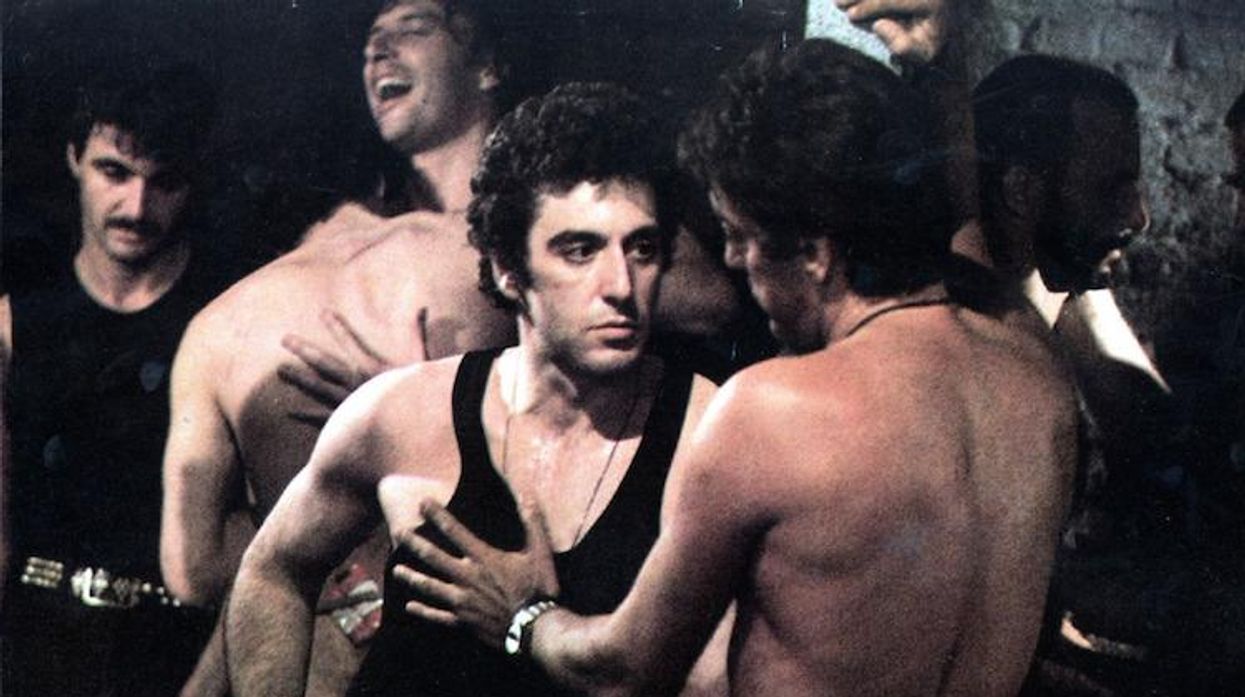In A New York City gay bar, a thick-legged dancer is stuffing folded one-dollar bills into a tight pair of black mesh boxer briefs, his uniform for the night. While his compatriots across the bar sport slogans like pump or addicted across their waistlines, his briefs have just a bit more pageant: a gold-stenciled Medusa head positioned right above the crotch. It's Versace, and, boy, is he earning it back.
Name-brand underwear is hardly a new trend. Just think back to the hot-and-bothered '90s, when Marky Mark had every man slipping into tighty-whities and Bruce Weber created an all-American, briefs-packing world of his own. It's easy to understand the appeal. It's expensive, but it's somewhat disposable. It's sexy, but it's a little funny. Who couldn't see the wit in the sight of tiny yet erect Gucci logos amid a night of passion? But today, in a style culture so confused by brands, underwear is just the beginning as the major and the mainstream turn their hands toward fetishwear.
Related | Behind the Power-Play & Psychology of Fetish Photography
Just take a cursory look at men's fashion this season. For Dior Homme's spring 2017 collection, designer Kris Van Assche decorated his typically streamlined suiting with nets of dark-striped nylon harnesses that echoed the collection's Egyptian-flag palette. Similarly, Kim Jones added subversive references -- monogrammed dog collars, D-rings, and bondage-buckle pants -- into Louis Vuitton's latest voyaging collection. Even signora Miuccia Prada threw in belted, strappy details that seem to channel this "chained in" or "locked up" trend for her spring set. Though certainly not the first instances of bondage on the catwalk -- provocative designers such as Thierry Mugler and Jean Paul Gaultier have long played with the fantasy -- these recent moves by commercial fashion houses bring into question the relevance of the fetish genre as a whole.
"Sex is such an integral element of our everyday life," says Nicola Formichetti, artistic director of Diesel and his own line, Nicopanda. He's had a personal history with the subversive, rebranding Mugler's eponymous fashion house from September 2010 until April 2013 after collaborating stylistically with Lady Gaga for several years and running around the New York and London nightlife scenes. "I love fetish fashion," he says. "I think it's so beautiful and well-designed -- not only for sex but also as wearable fashion. It shows power or lesser power. It's about normalizing niches: Fashion presents ideas, which seem unconventional, but they're made more conventional through the presentation."
Related | Diesel Takes a Stand Against Trump With 'Make Love Not Walls' Campaign
Formichetti views the fetish phenomenon as a reckoning effect, in the same way that hot pants or platform shoes might have appeared outrageous before the runway made them almost pedestrian. But this logic, that this kind of fashion has the power to make the outrageous seem OK -- to standardize what was once off-limits -- also dilutes the power of fetishwear to thrill and subvert.
On West 19th Street, in New York's Chelsea neighborhood, sits Nasty Pig's brick-and-mortar shop. The brand tailors almost solely to gay men, offering quintessential jocks and trunks beside tight-thighed "day" wear. Its motto? "Fun clothing that gets you laid."
"We're the great American wet dream," says co-founder and CEO David Lauterstein, who also references Mugler's influence. "No one can see fashion through the eyes of sexual power better than he does," he says, adding that the designer is a Nasty Pig customer.
Lauterstein knows how thrown-together it all might seem, and, despite designing co-branded Nasty Pig for Nicopanda harnesses last fall, the businessman is also aware of the impending limits of his bubble-tight industry. "When we started in 1994, there was a very big push for gay people to shop at gay-owned and -operated companies," he says. Back then, his task was to forge an identity in the "post-AIDS crisis" world. Nasty Pig was one of the first companies of its kind to champion hairy, bearded models in its marketing materials, contradicting the era's "shaved and plucked pretty boys," as Lauterstein describes them. He says it was difficult at first, but through the years the brand has been reinforced by the evolution of cliques inside the gay community, which have given rise to apps like Scruff and made a once marginal culture feel omnipresent. That may not be enough for the long term, however. "There's definitely a market for gay-culture brands today," Lauterstein says, "but brands that rely exclusively on being gay will fail."
Like its neighbors Rufskin and Parke and Ronen, Nasty Pig is just one of the area's flock of fetish brands hoping to cross over from niche wear into everyday looks as more and more conventional clothiers continue to gravitate in their direction. What else can be expected from this counterculture reversal? Most likely, a hike in the price. More important, how does this dynamic alter the legacy of some of these shops that have long been embedded in the gay community?
Being a gay man in 2017 is a very different experience from that of 20 years ago. Politics aside, the mainstreaming of the queer identity has already informed so much of what we hear and see on an all-consuming basis. That, combined with the mobility of technology -- not just in the advent of cruising devices but in the online experience as a whole -- has fundamentally shifted the way consumers behave. Gay men no longer need to head west to Sunset or down to South Beach to buy bedroom gear when countless options and sizes are just a click way. Even outside metropolitan cities, gay culture has never been more accessible than it is today. Recently, Amazon surpassed Walmart as the biggest global retailer by market value. This is just as the sex-toy industry reported $15 billion in gross sales in 2016, largely thanks to online buyers. While identity doesn't derive from product, it is undeniably shaped by it. In many ways, the idea of Nasty Pig and like-minded stores hearkens to our LGBTQ past. That's not to say that these safe spaces are no longer needed -- this is a time when civil security in the United States, as well around the world, is in question -- but they have changed. Specifically in the consumerism of sexuality, niche no longer feels so influential.
Earlier this year, Formichetti launched a highly publicized advertising campaign for Diesel on the pornography Web site Pornhub. Though not exclusively gay, the campaign also appeared on Grindr. "I don't think the new generation thinks about sex in the way older generations do," Formichetti explains. "The way we present ourselves through fashion and sexuality are innately intertwined." Notably, both platforms have also explored one-off fashion partnerships, with indie fashion brands Hood By Air and J.W. Anderson, respectively (though neither is a match for Diesel's global reach and scale).
Related | Diesel Does Pornhub
In this new, sex-positive space, perhaps we can consider the ubiquity of fetishwear as a sign of change rather than simply a market trend. As with other cultural signifiers, one finds that the tipping point seems almost premeditated. Formichetti agrees, pointing toward fashion's trickle-up demands of youth today and its open-ended embrace of gender nonconformity. With this evolution, and its translation from concept to the real world, Lauterstein also must continue to change. The first steps are already in motion. He says with a laugh, "A whole lot of people can get on board and identify as sexual beings through their personal style, whether in head-to-toe rubber or by wearing a jockstrap under their suits at work."
Across town from Nasty Pig, on the east side of New York, riding through the clear-glass elevator of the hipster fashion mall Dover Street Market, it's not so hard to imagine what the future of this new type of retail will look like. Will the ball gags be on the ground floor, beside the cases of jewelry in obsidian black? Or, who knows, will there be an array of whips displayed elegantly on customized shelving? But until then, you can check out new pieces from Belgian designer Raf Simons, whose spring collection feature rare images of Robert Mapplethorpe. One particularly oversized dress shirt flaunts a self-portait of the late photographer, who famously depicted New York's BDSM scene during the '60s and '70s. His backside is out, his body contorted. He is smiling, certainly, at what is to come.
Like what you see here? Subscribe and be the first to receive the latest issue of Out. Subscribe to print here and receive a complimentary digital subscription.


